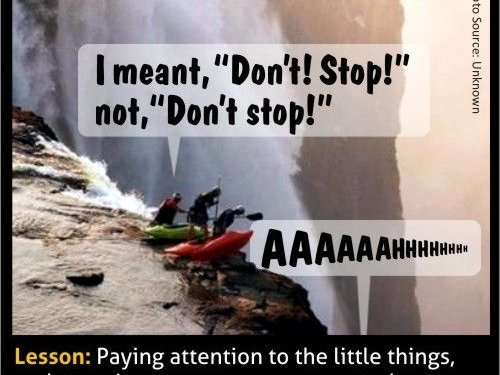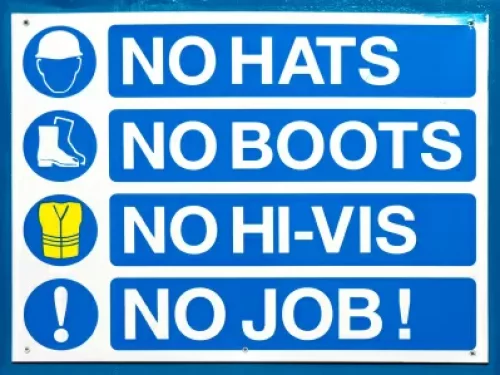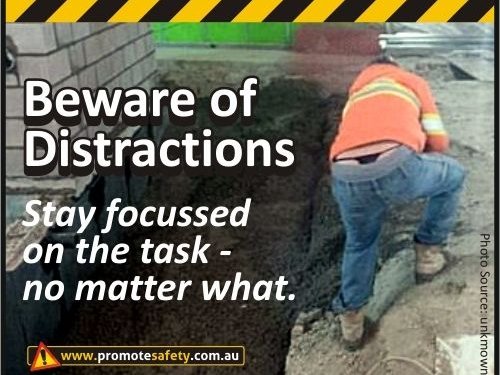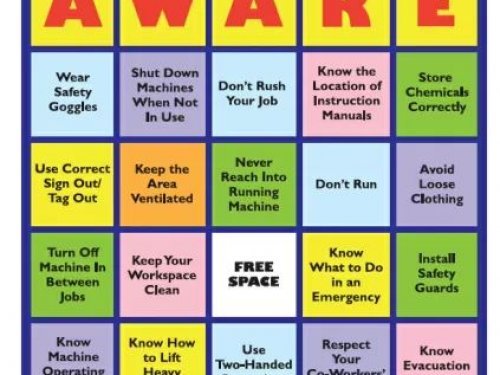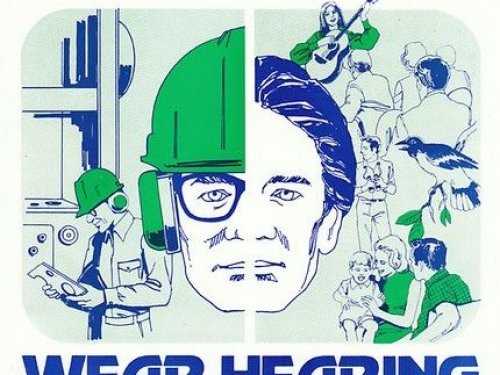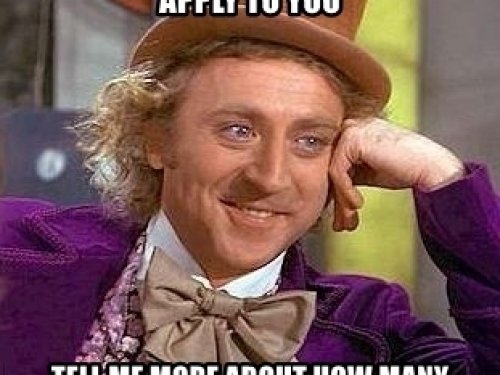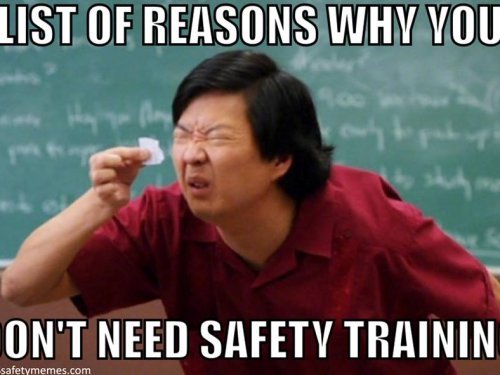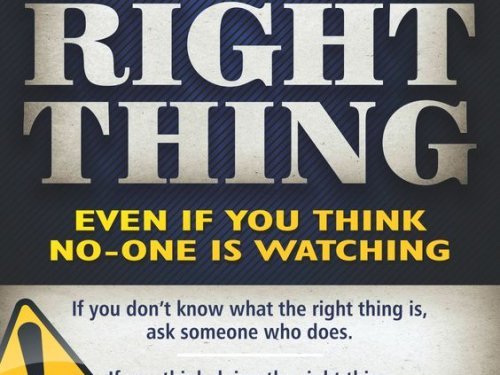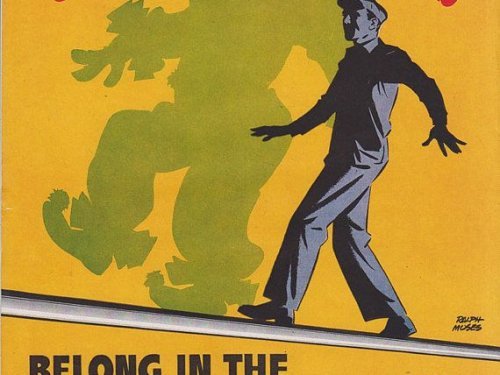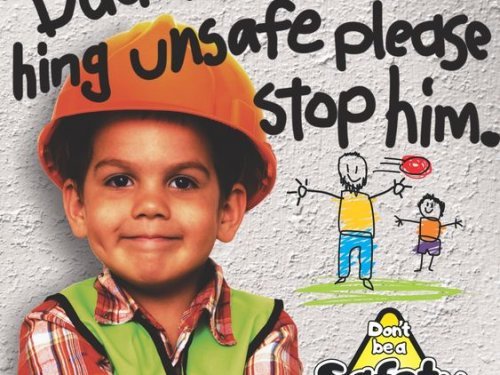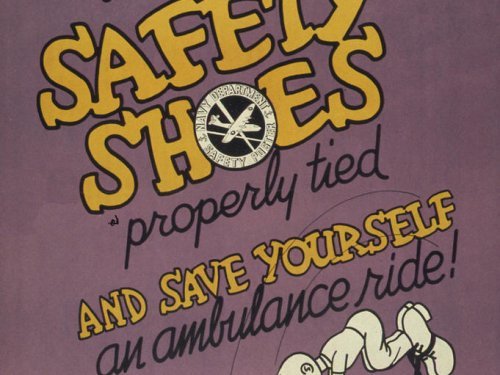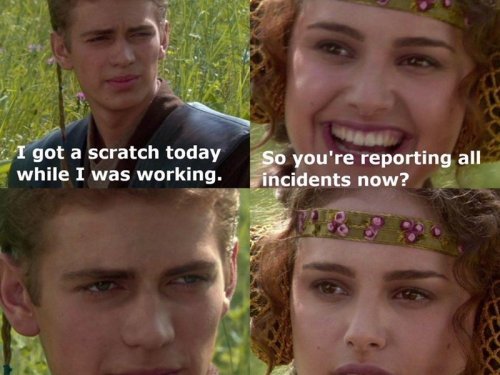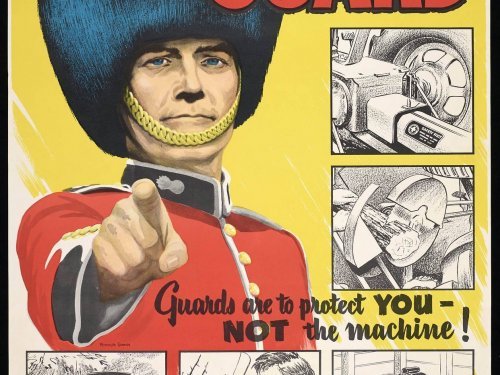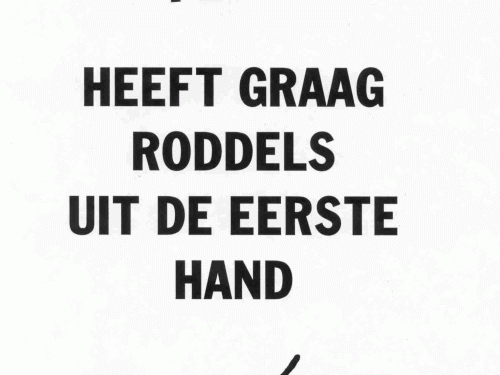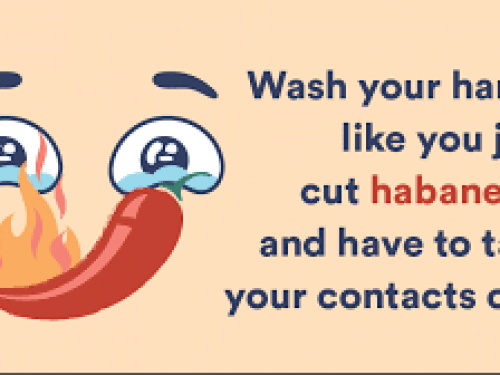1. Think about their placing
Placement is of vital importance.
Where many other announcements are already made on paper, the safety poster becomes less unique. Just one of many messages that should all be important. So separate your poster from other organisational messages. Otherwise you risk other posters distracting attention.
Even if the posters are about production, hanging around the production line is not a good place. Hanging around a busy production line creates new safety risks.
Hang them in places where there are lots of people but where there is a greater chance that employees will also read them carefully. Ideal places are, for example:
- the toilets
- the break room
- the entrance to a production hall
- at the time clock
- in a lift
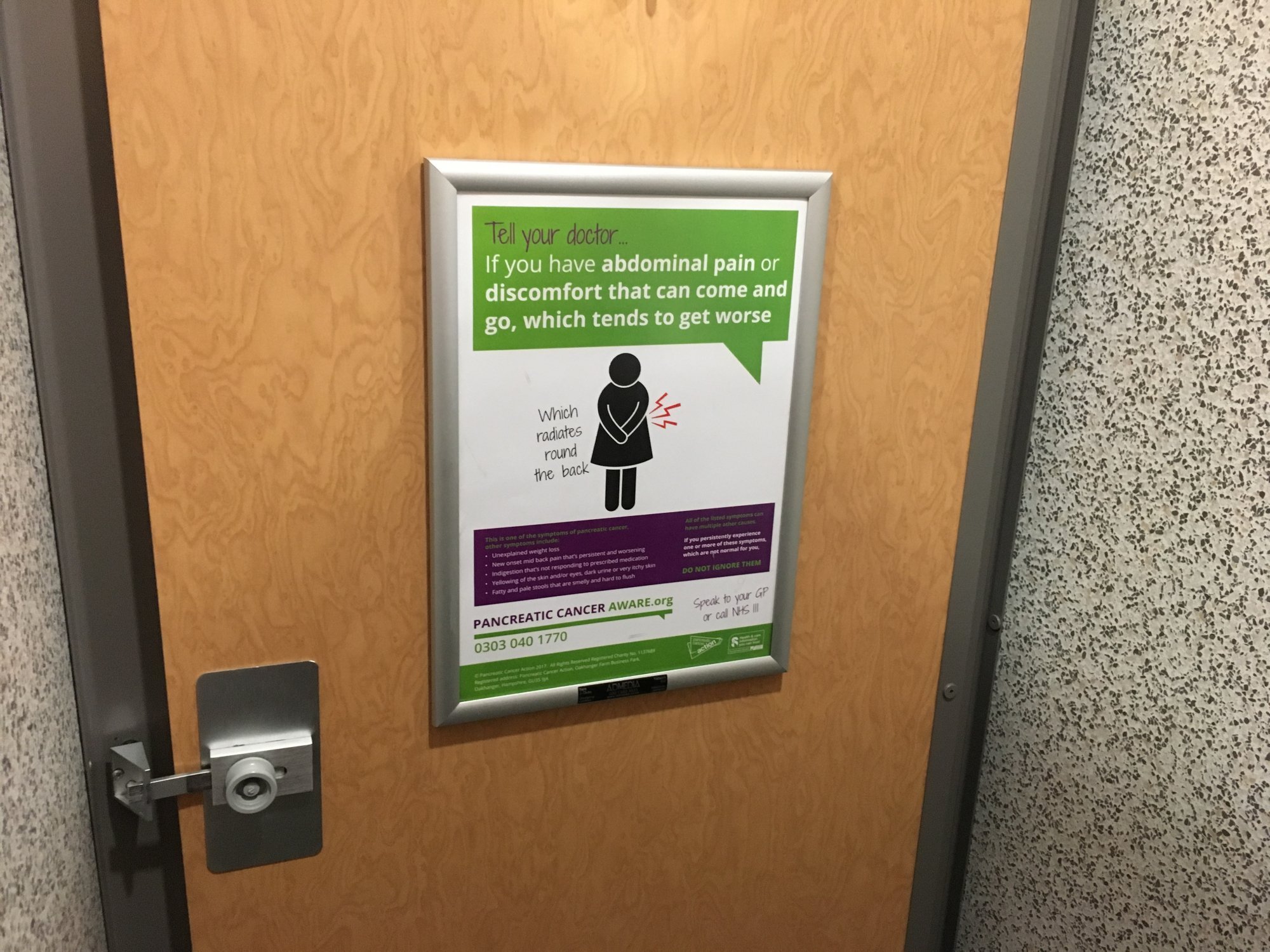
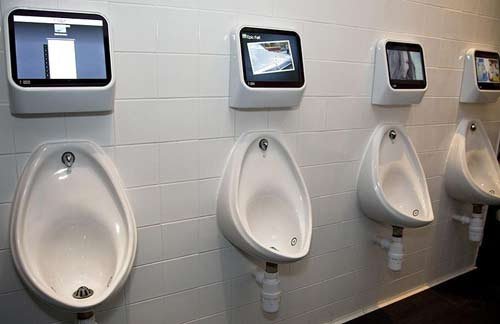
2. Roteer ze zo nu en dan
Posters that stay in the same place for a long time fade into the background. Employees no longer notice them. Put up your posters regularly in new locations. Start with the toilets, for example, and work your way to the break rooms.
By rotating your safety posters, you ensure that the message reaches a new group of eyes. When it comes to the life cycle of safety posters, always err on the side of caution. If you feel they have been hanging around for a long time, move them. Of course, this does not apply to the standard posters with labour legislation whose updates are determined externally.
3. Use posters as a supplement
The main purpose of a safety poster is to reinforce safety training. Therefore, use them also as an additional tool for team meetings or toolbox talks. When employees see a poster, they should remember a useful tip from the safety meeting. Or regain awareness of a real danger they were about to avoid.
Because messages with a clear context stick better, it is best to show them during your safety meeting.
This context is created by using real-life examples and figures. A near miss accident or the report of a near miss is very rewarding. Moreover, you stimulate employees to dare to speak about unsafe situations. You reward their openness, as it were, by giving their report some attention. This gradually leads to a supported safety climate with personal responsibility.
Anyone who wants to get the most out of such a meeting will find additional tips here.
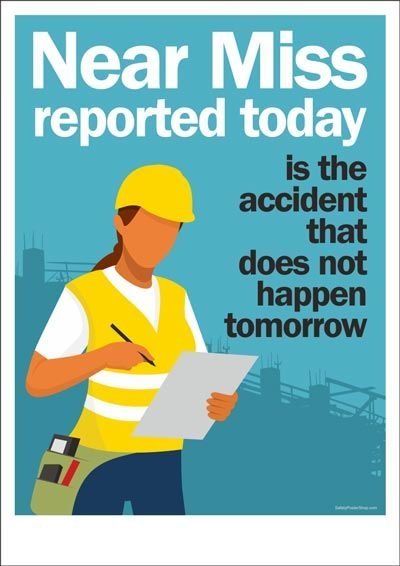

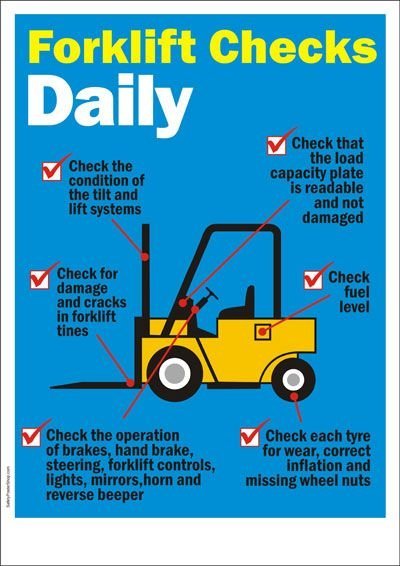
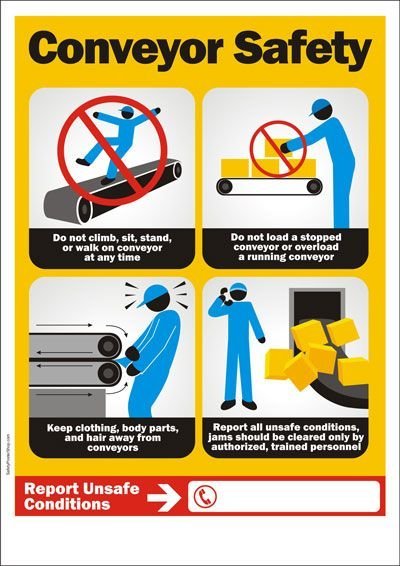
4. Beperk je tot één idee per poster
For a driven prevention advisor, this will probably be a bit of a stretch, but "less is more". You may find it difficult to choose between safety risks that all beg for attention in your company. Especially when you have not been working there for long, you see (too) many points of attention. Make that selection anyway. Above all, try to keep it clear and simple. The K.I.S.S. principle is your guide.
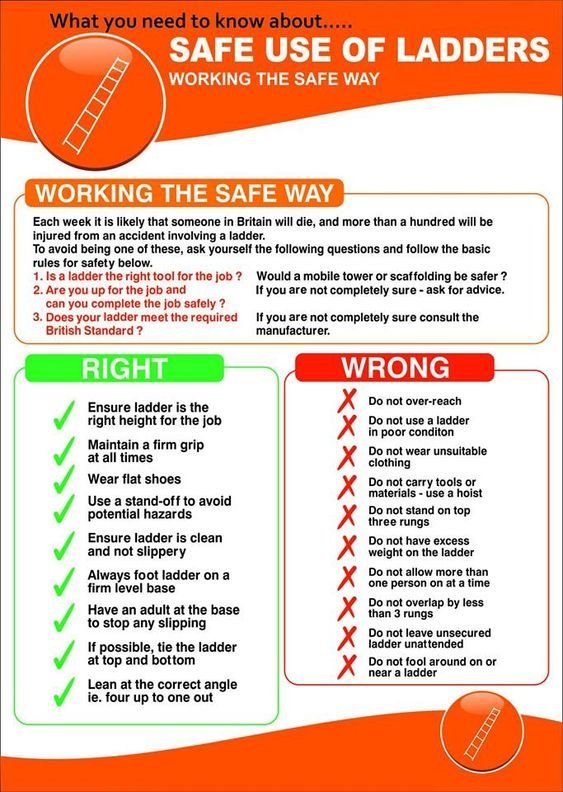
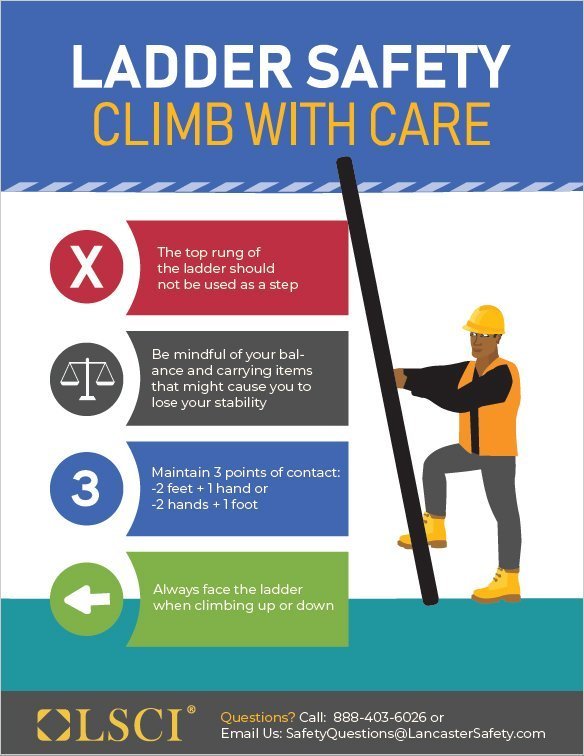
5. Make your safety posters stand out
Keeping it simple does not exclude your posters from being eye-catching and even entertaining.
Relevant memes can be a great tool, especially in a company with a young population. Because they are humorous in the first place, but even more so if you work with topical memes. If you're a bit of a social media follower, you'll quickly spot trending memes. Using them in your new safety poster can make some employees look forward to the next poster. They will be curious to know what point you are making with an image they know. This way, you avoid the stereotypical image of the "hackneyed" standard safety poster.
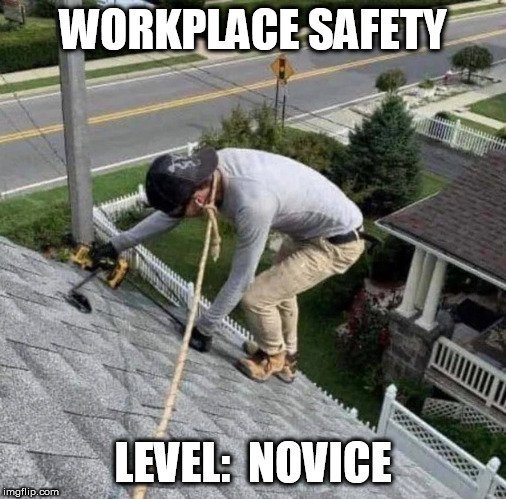
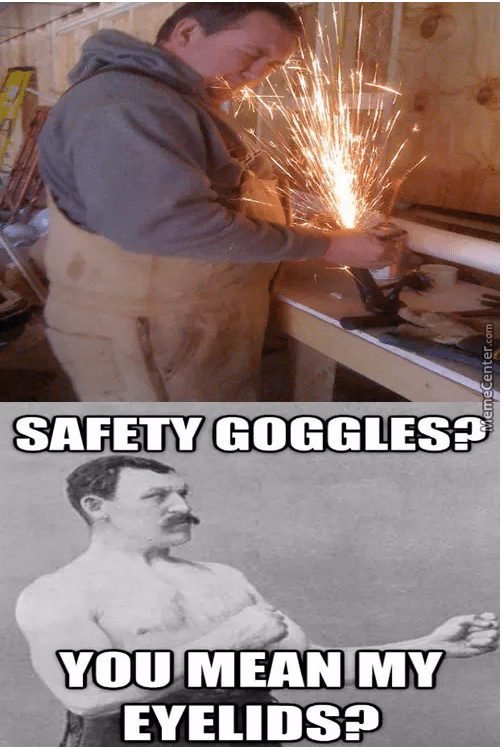
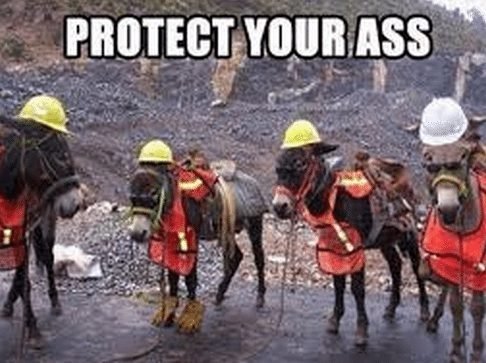
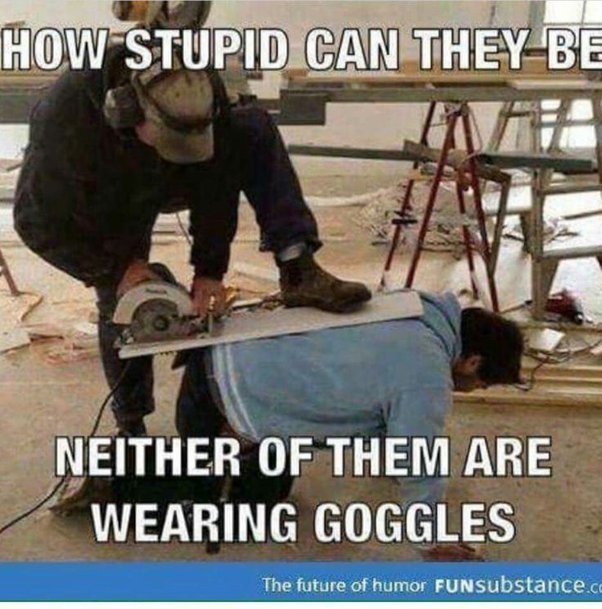
If you would succeed in getting employees to make their own suggestions or design their own posters, you will of course achieve an even higher goal. They are more involved in the process and keep their safety knowledge up to date. Do you notice that a certain poster gets attention? Or that a meme catches on? Then try it out as part of a hands-on approach.
Posters with a recognisable, but above all original style will stand out more. You can find a lot of inspiration online. Maybe memes are nothing for your business, but humorous vintage posters? Pinterest and Canva are very accessible apps to quickly make your own posters from what you saw elsewhere. Not everyone has the same graphic talents and you don't need to invent the hot water.
But finding your own recognisable and fresh style will ensure that you enjoy this form of communication.
6. Do not convey new ideas
You pitch important ideas at an ideal time, when your audience has the necessary context and is as receptive as possible to what you want to convey. This also applies, and pre-eminently, to new safety topics.
A poster is not enough. Strong, complementary images and slogans work well as an echo of what you mentioned earlier. Teaching new behaviour requires its own step-by-step approach. For this, you do not rely solely on posters, no matter how good they are or how ideally positioned.
7. Use the anatomy of the ideal poster
Whether you work with store-bought posters or design them yourself, make sure that the layout and formatting elements are effectively chosen. This means that the design is based on how people instinctively view them. That is according to the F or Z pattern. (Illustration safestart.com) This is how you deliberately guide the viewer's gaze from the title to the supporting image elements by arranging and spacing them appropriately.
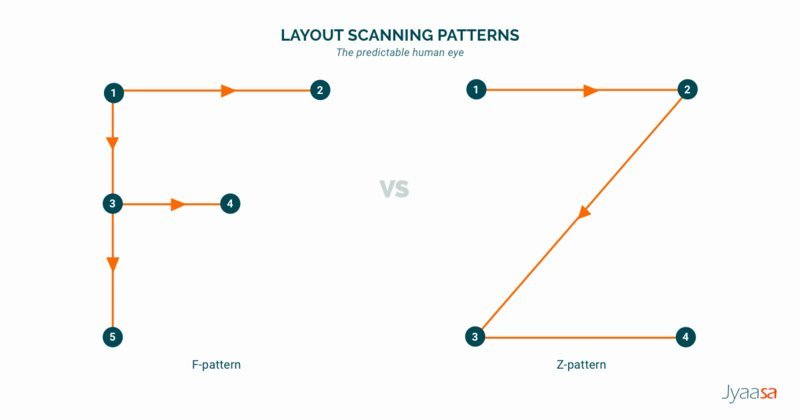
Choose these layout elements carefully:
- title: conveys the message in a thoughtful and concise manner, so must be direct and specific, as the title attracts 5 times more readers than the content
- subtitle: if the headline does not capture the main message, explanation of maximum 1 sentence
- images: attract attention and explain the message at the same time
Pexels, Pixabay and Unsplash offer affordable images, but high resolution pictures attract more attention, especially if people recognise something from their own environment. Bad illustrations influence your message negatively. It is better to leave them out and focus on the titles. - supporting material: additional information or instructions
- "kill your darlings" and do not overload with information. Better a bulleted list than complete sentences as well.
- business language is for compulsory posters, but for behavioural change or habit development it is better to work with positive reinforcement
- strike the right tone: humour is not appropriate for every safety topic
- don't patronise: People already know what they need to do; you need to remind and encourage them. - colour and font: contrast with the surroundings in bright colours, but don't overdo it, including too many fonts.
Too many fonts make processing difficult for our brain. So, maximum 2 different ones.
Coloured text can fade into the background.
An excess of text formatting (bold, italic, underlined, raised, ...) hinders reading. Therefore, preferably use lower case letters and do not capitalise everything.
For maximum engagement, focus on simplicity, a style that resonates with your workplace and sufficient rotation. Know your audience and address them in a way that suits them.
Don't be afraid to try something new and to deviate from the usual. Let go of your old idea of "decent" safety posters without fearing that your message will come across as less strong or even ridiculous.
The choice and motivation to work safely is part of the safety culture within a company. A prevention advisor who accentuates this culture with knowledge and appropriate humour can only strengthen it.



